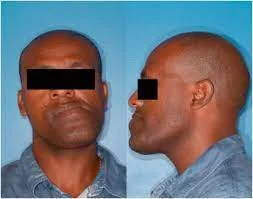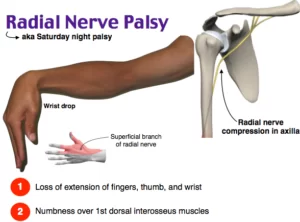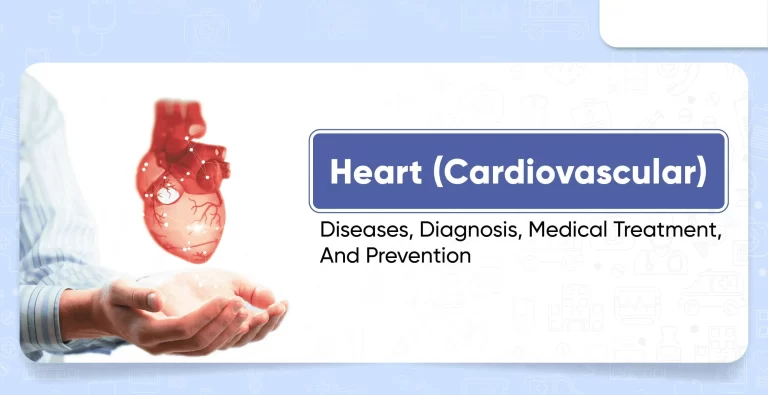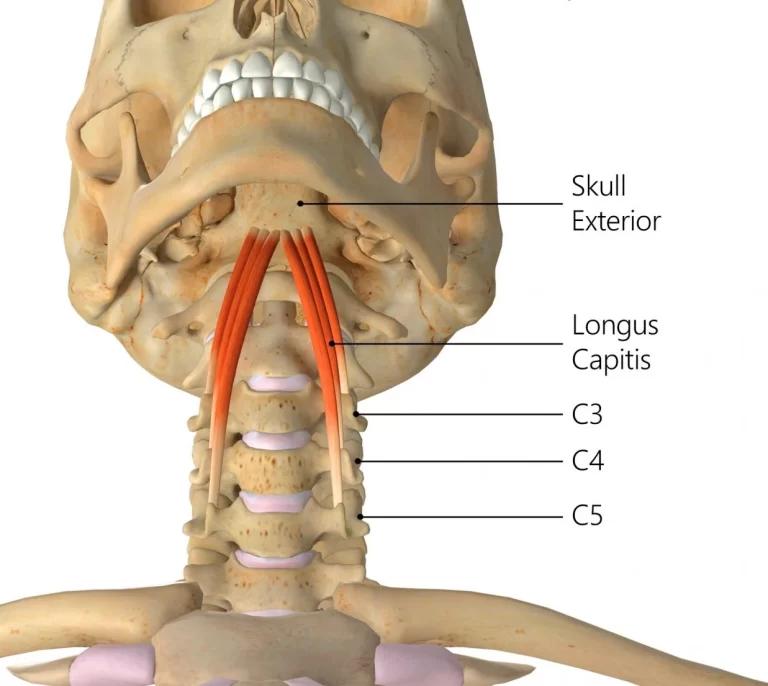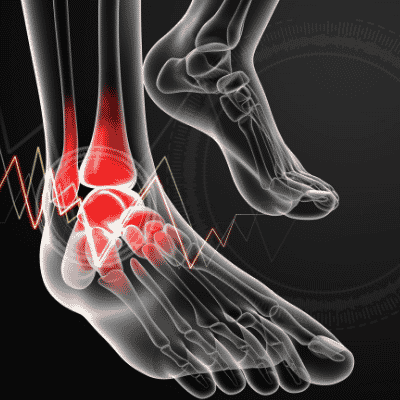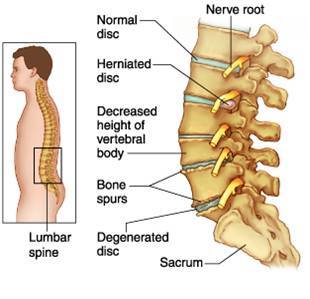Jaw Dislocation
What is Jaw Dislocation?
Jaw dislocation occurs when the mandible bone becomes displaced from its normal position, leading to difficulty in opening and closing the mouth. This condition can be caused by various factors such as trauma, jaw muscle spasms, or joint disorders.
- Dislocation of the jaw is named when the lower part of the jaw mandible moves out of its normal position. It generally heals nicely, but it should create problems in the future. If dislocates the jaw, require medical help as soon as possible and never try to put a dislocation back in place yourself.
- The lower part of the jaw is attached to the skull by joints just in front of each ear, named the temporomandibular joints. A dislocated jaw occurs when the lower part is dragged away from one or both of the jaw. Even if the lower part pops back into the jaw, it should still cause pain and other problems.
- A dislocated mandible/jaw is commonly a very painful, acute dental pain that requires the quick concentration of a doctor or dentist. The mouth cannot be closed, and the jaw might be turned to one side either right or left. A dislocated jaw should be periodically caused by an injury of the jaw but is normally caused by opening the mouth over the normal limit such as activity during yawning, biting into a large sandwich piece, vomiting, or during a dental process.
- Dislocation is more likely to happen in people with earlier dislocations or who have looseness of the jaw termed hypermobility, which must result from temporomandibular disorders.
- A doctor or dentist typically works the jaw dislocation to get it back into place by hand that technique is known as manual reduction.
- When a person has a dislocated jaw it is tough to open and close the mouth. A dislocation should happen following a series of possibilities if the jaw locks while trying to open or is incapable to close the jaw. If the jaw is dislocated, it might cause an extreme headache or inability to focus. When the muscle’s alignment is out of alignment, the pain will happen because of unwanted rotation of the jaw.
- If the pain stays constant, it must need surgery to realign the jaw. Depending on the severity of the jaw’s dislocation, pain relief such as paracetamol might help to ease the initial chronic pain. If the pain relief is taken for an extended period, it must negatively affect the person while talking, eating, drinking, etc.
Key Facts of the Jaw Dislocation
- Jaw dislocation happens when the lower part of the jaw shifts out of its normal position.
- The major symptom of a dislocated jaw is pain that occurs in the temporomandibular joint which gets started to make worse condition the jaw when the patient moves his/her jaw.
- If a person assumes he/she has a dislocated jaw, it’s necessary to see a doctor as shortly as possible.
- the doctor will slightly move the jaw back into its proper position.
- Use a mouth guard, helmet, or other safety equipment to save the face during sport.
What are the symptoms of a Jaw Dislocation?
- The symptoms of the dislocation of the jaw should be multiple depending on the severity of the dislocation injury and how long the person should be imposed with the injury. Symptoms of a dislocated jaw involve a bite that feels off or abnormal, a hard time talking or moving the jaw, not being able to close the mouth completely just partially able to open and close the mouth, salivating because of not being able to close the mouth completely, teeth just feel like they should out of alignment, and a pain that becomes severe
- The immediate symptom should be a loud crunch noise happening straight up opposite the eardrum. This is immediately followed by severe pain, especially on the side where the dislocation occurred.
- Short-term symptoms should range from mild to chronic headaches, muscle tension, or pain in the face, jaw, and neck pain.
- Long-term symptoms should result in sleep poverty, tiredness/lethargy, frustration, bursts of anger or short fuse, difficulty performing everyday tasks, depression, social issues correlating to difficulty talking, hearing sensitivity, especially to high-pitched sounds, tinnitus ringing in the ear, and pain when seated related with posture while at a computer and reading books from general stress on the jaw and facial muscles when tilting the head downward or upward. And possibly causing subsequent facial asymmetry.
- In contrast, symptoms of a fractured jaw involve bleeding coming from the mouth, unable to open the mouth broad without pain, discoloring, and swelling of the face, difficulty eating because of the pain, loss of sensation in the face mainly in the lower lip and difficulty of the full range of motion of the jaw.
- pain
- swelling, involving facial swelling
- breathing difficulties
- pain when chewing
- Speaking may be difficult.
- stiffness and difficulty moving the jaw
- pain in the face or jaw
- Problems talking
- Drooling because of incapability to close the mouth fully
- Locked jaw or jaw that protrudes forward movement
- numbness and bruising in the face
- dental-related distress, such as numbness in the paste or loosened teeth
What are the signs of a Jaw Dislocation?
- The signs of a dislocated jaw should be different from a broken jaw. Pain is a factor, and it must become worse when moving the mouth or the body. Extra signs of a dislocated jaw involve the following:
- the jaw might appear to extend out too much, as in an overbite.
- the person might detect that the teeth should not line up as the person generally does for daily living activities and the bite feels strange.
- An abnormal bite should stop the person from closing his/her mouth completely, and this must cause drooling of saliva.
What are the causes of a Dislocated Jaw?
- Experiencing facial trauma is the prior cause of a dislocated jaw. The jawbone grows from the chin to behind the ear. Common types of injury that should cause fractures or dislocations in the jawbone are:
- airway blockage
- physical attack in the face
- sports injuries
- motor vehicle accidents
- unexpected falls in the home
- industrial or workplace accidents
Anatomy of the jaw dislocation
- The joint which includes jaw dislocation is the temporomandibular joint. This temporomandibular joint is located where the mandibular condyles and the temporal bone meet each other. Membranes that encompass the bones assist during the hinging and gliding of jaw movement. The mouth that closes the jaw needs the following muscles such as the masseter, temporalis, and medial pterygoid muscle. For the jaw to open the mouth needs the lateral pterygoid muscle.
What is the pathophysiology of Jaw Dislocation?
- There are four different types of positions of jaw dislocation such as posterior dislocation, anterior dislocation, superior, and lateral dislocation. The most common position is anterior dislocation, while the other types of dislocation should rare. Anterior dislocation moves the lower jaw forward if the mouth should too excessively open. This type of anterior dislocation must happen bilaterally or unilaterally after yawning. The muscles that will be impacted during anterior jaw dislocation are the masseter and temporalis muscles which pull up on the mandible and the lateral pterygoid muscle which relaxes the mandibular condyle. The mandibular condyle gets locked in front of the articular eminence.
- A posterior dislocation should probably be for people who get injured by being punched by another’s hands in the chin. The posterior dislocation of the jaw will force the jaw backward side moving the alignment of the mandibular condyle and mastoid. The external auditory canal might be fractured. superior dislocations arise after being punched below the level of the mandibular ramus as the mouth persists half or partially open. Since mindblowing energy emerges in a punch, the angle of the jaw /mandible will be forced to move upwards side towards the condylar head. The superior dislocation of the jaw should find in a fracture of the glenoid fossa and displacement of the mandibular condyle into the mid-cranial fossa, surely injuring the facial and vestibulocochlear cranial nerves and the temporal lobe. Lateral dislocations of the jaw move the mandibular condyle out from the skull and should likely occur jointly with jaw fractures.
- Posterior dislocation, superior dislocation, and lateral dislocations of the jaw would not be general harm but naturally result from high-energy trauma to the chin. By contrast, anterior dislocations should be more frequently a result of low-energy trauma, for example, tooth extraction or secondary to a medical condition that impacts the stability of the joint like seizures, ligamentous laxity, and degeneration of the joint capsule.
What is the diagnosis of the dislocation of the jaw?
- As with other joint dislocations, clinical records and analyses are required for the diagnosis of jaw dislocation. normally, plain and panoramic X-ray radiographs are utilized to evaluate the relative position of the mandibular condyle. If a complex or uncommon injury should be supposed, three-dimensional computed tomography will be most dedicated to diagnosing dislocation and perhaps connected to fractures or soft tissue injuries.
- In case of dislocations resulting from high-energy trauma, attention must also be spent on possible other injuries, precisely blunt or indirect trauma to the skull and the cervical spine. Acutely life-threatening conditions are required to be ruled out or treated in the first line. For superior jaw dislocation in serious intracranial complications such as epidural hematoma should be probable and must be terminated and handled to control disability or exact death. Therefore, neurological status must be analyzed in patients with complex dislocations containing temporal bone fractures. Hearing deficiencies on the injured side might indicate damage to structures of the ear.
Computerized Tomography
- A CT scan utilizes a tube with multiple X-ray machines to form a 3D image from 2D X-ray pictures from multiple cross-sections. Radiolucent objects should be satisfactorily captured on Computerized Tomography scans rather than X-rays. Since Computerized Tomography is multiple X-rays, the radiation exposure is excessively greater.
What is the treatment for Jaw Dislocation?
- Most temporomandibular disorders should self-limiting and should not get worse. Simple treatment, applying self-care practices, rehabilitation desired at stopping muscle spasms, and regaining correct coordination, are all that should be needed. Nonsteroidal anti-inflammatory analgesics (NSAIDs) must be utilized on a short-term, regular basis and not on a needed basis. On the further hand, treatment of chronic temporomandibular disorders must be hard and the condition of the jaw is best handled by a team strategy; the team includes a primary care physician, a dentist, a physiotherapist, a psychologist, a pharmacologist, and in a small digit of cases, a surgeon. The different methods involve patient education on learning and self-care exercises, medication, physical therapy, splints, psychological counseling, some relaxation techniques, biofeedback, hypnotherapy, acupuncture, and arthrocentesis, etc.
Hypnotherapy for Jaw Dislocation
- Before starting hypnotherapy it is essential to know about hypnosis and its effect on the hypnosis
- hypnosis, a process of contact with the unconscious mind occurs. This results in a senseless response to suggestions giving grant individuals relax deeply. In fact, a natural state of mind that is joined into hypnosis without realizing it, as in daydreaming.
Acupuncture Treatment for temporo mandibular joint
- Acupuncture should perform to decrease inflammation and pain from dislocated conditions, involving musculoskeletal disorders such as temporomandibular dysfunction. Acupuncture is useful in reducing sensations of pain, both by lowering inflammation in regions from which the pain is arising and by prompting the release of endorphins and further neurotransmitters that assist increase feelings of well-being. Acupuncture treatment should also assist the muscles affected by jaw position to relax, relieving the clicking or popping sound connected with temporomandibular joint disorders.
Arthrocentesis or joint aspiration for jaw dislocation
- it is the clinical approach executed to diagnose and treat musculoskeletal conditions. The approach involves using a needle to get synovial fluid from or inject medicine into the joint capsule. Laboratory analysis of synovial fluid should further indicate and represent the diseased joint and differentiate the diagnosis to confirm the proper diagnosis
Biofeedback for Jaw Dislocation
- Biofeedback If the patient having a tough time changing her/his habits, they should gain an advantage from biofeedback, an approach that uses monitoring procedures and equipment to teach you to control muscle activity in your jaw.
First Aid for Jaw Dislocation
- A person with a broken or dislocated jaw requires medical awareness right away. This is because they might have breathing problems or bleeding. Call the local emergency number like 911 or a local hospital for additional advice.
- Keep the jaw slightly in position with the hands on the route to the emergency room. the rescuer should also cover a bandage under the jaw and beyond the top of the head. The bandage should be comfortable to release in case the person requires to vomit.
- in the hospital, if the patient must feel breathing issues, serious bleeding happens, or intense swelling of the face, an oropharyngeal tube must be positioned into the airways to help him/her breath
- If the jaw is dislocated, a doctor might be capable to position it back into the right position utilizing the thumbs. Numbing medications like anesthetics and muscle relaxants must be needed to loosen the jaw muscles.
- Afterward, the jaw might require to be stabilized. This normally applies to bandaging the jaw to maintain the mouth from opening broadly. In some cases, surgery must be required to open the mouth, specifically if repeated jaw dislocations happen.
- After dislocating the jaw, the person should not open her/his mouth broadly for at least 6 weeks. Maintain the jaw angle with one or both hands when yawning and sneezing.
Medications for Jaw Dislocation
Nonsteroidal anti-inflammatory drug
- ibuprofen drug eases the pain from lots of conditions like headaches, dental pain, menstrual cramps, muscle aches, arthritis, etc. It is also utilized to decrease fever and to ease minor aches and pain because of the common cold or flu. Ibuprofen is a nonsteroidal anti-inflammatory drug. It works by blocking the body’s production of specific biological substances that cause inflammation. This effect aids to lower swelling, pain, or fever. If treating a chronic condition ask the doctor about non-drug treatments and/or utilizing other medications to treat the pain. See also the Alert area. Check the components on the label if the person used the product earlier. The manufacturer might have altered the components. Also, products with equal names might include different components for different goals. Taking the incorrect medicine could harm the person.
Muscle relaxants for Jaw Dislocation
- Muscle relaxants do not generate patients unconscious or relieve pain. Rather then, muscle relaxants are periodically utilized behind a patient is developed unconscious effect of anesthesia to encourage tracheal intubation or surgery by paralyzing skeletal muscle.
- different types of muscle relaxants are useful to relieve pain like succinylcholine, mivacurium, atracurium, cisatracurium, rocuronium, vecuronium, doxacurium, pancuronium, pipecuronium, etc.
general anesthetics for Jaw Dislocation
- An anesthetic is a drug utilized to generate anesthesia in other words, to result in a quick loss of feeling or attention. An anesthetic is divided into two categories 1) general anesthetics and 2) local anesthetic, a general anesthetic which conclusion in a reversible loss of consciousness, and local anesthetics, generate a reversible loss of sensation for a little part of the body without necessarily affecting consciousness.
ultra short-acting barbiturates
- Ultra short-acting barbiturates like methohexital and thiopentone for reducing pain
methohexital
- methohexital is equal to thiopentone, three times more powerful. and has a shorter and shorter time of 4 to 8 min action. Excitement during the start of the treatment and recovery is more standard. It is more quickly metabolized time four hours rather than thiopentone: the patient might be fit and faster recovery.
thiopentone/thiopental
- It is an ultrashort-acting thiobarbiturate, positively soluble in water creating a strongly alkaline liquid, which must be arranged freshly before injection.
Benzodiazepines
- benzodiazepines such as midazolam intravenous slower-acting drug
- Benzodiazepine is water soluble, non-irritating to veins, faster and shorter acting t one-half time 2 hours, and 3 times more powerful than
- diazepam. The drop in blood pressure is relatively greater than with diazepam. It is being chosen beyond diazepam for aesthetic use: 1- 2.5 mg intravenous followed by I/ 4th additional doses. Because of its brief duration of action. midazolam is the only benzodiazepine appropriate for the sedation of inserted and mechanically ventilated patients. It is typically utilized in critical care anesthesia as 0.02-0.1 mg/kg/hr constant intravenous infusion
Exercise for Jaw Dislocation
Relaxation exercises for the jaw
- temporal mandibular joint pain must frequently be affected by tension-producing anxiety. Simple relaxation exercises should benefit.
- Here are two relaxation exercises:
- Gradually inhale, permitting the stomach to raise rather than the chest. Exhale gradually while creating the expiration last around as long as the inspiration. Repeat the 5-10 times the movement.
- While sitting or lying in a comfortably supported position, stretched and release stress from individual muscles in the body. Start with the downward side of the feet and perform upwards to the head.
- This second exercise is an advanced relaxation exercise to assist people become more conscious of sites of tension. It might also prepare them with the skills to purposely release that tension from the muscle.
Stretching exercises for the jaw
- Stretching exercises should help with the temporomandibular joint disorder during a flare-up. stretching exercises lessen muscle and joint tension, suggesting longer-term relief:
- position of the tip of the tongue on the top of the mouth. Open the mouth as broad as you comfortably can, and hold for 5-10 seconds.
- position the tip of the tongue on the top of the mouth. Glide the lower jaw out as far as it will go and then back to normal position. Hold for 5-10 seconds per position.
- Gradually and steadily open the mouth as broad as it will comfortably open, with the tongue in a neutral position. Hold for 5-10 seconds then close the mouth. Next position, open the mouth gently and glide the lower jaw back and away 5-10 times.
- Close your mouth. With the head facing straight forward, look to the right side with your eyes only. Raise the lower jaw to the left side and maintain that position for 5-10 seconds. Repeat these stretching exercises on the opposite side.
- Put a thin object, such as a pencil or paintbrush, in the middle of the front teeth. Glide the lower jaw forward so that the thing relaxes in between the back teeth and the front teeth. Hold for 20 seconds.
- Other methods that should reduce temporal mandibular joint pain involve
- Using an ice pack on the affected region for 20 minutes. Some individuals discover that alternating hot packs and cold packs, for 15 minutes, indicates actual greater relief.
- Massaging the neck and head muscles to prevent tension radiating from the temporal mandibular joint
Goldfish exercises – partial opening
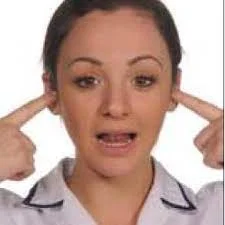
- goldfish exercise is executed in a sitting position.
- First, put the tongue on the roof of the mouth & put one finger in front of the ear.
- Then position the middle & tip of the fingers on the chin.
- Try to lower the lower jaw from midway & then close the jaw.
- It is formed to mild resistance but stops when feeling pain.
- For a performance of the goldfish exercise, position one finger on the individual temporomandibular joint.
- Try to lower the lower jaw from midway & closed the jaw again.
- Do the goldfish exercise do 6 repetitions per time
- 6 sets per day
Goldfish exercises – full opening
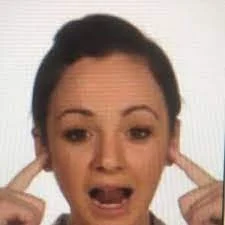
- goldfish exercise is performed in a sitting position.
- Must be maintaining the tongue on the top of the mouth.
- Position one finger on the temporomandibular joint and another finger on the chin.
- Attempt to lower the lower jaw fully & backward again.
- For a performance of the full opening of the goldfish movement, position one finger on an individual temporomandibular joint and fully lower the lower jaw and backward again.
- repetitions 6 times
- sessions 6 per day
Cervical Retraction “Chin Tucks”

- The purpose of the Chin Tucks exercise is to strengthen the cervical muscles and improve the alignment of the head and spine.
- Step 1: Begin from a standing position with the shoulders turn backward and the chest lifted up.
- Step 2: Bring out the head straight and push backward, tucking with the chin
- Step 3: Hold the head straight throughout the tuck chin movement.
- Hold the tuck chin motion for three seconds at a time and repeat it up to 10 times.
Resisted opening of the mouth
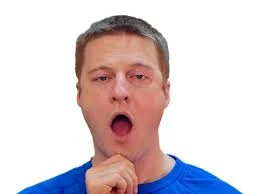
- This movement is performed in a sitting position.
- First, position the thumb under the chin.
- Then attempt to open the mouth slowly and move slightly against the chin for resistance.
- Hold this exercise for 3 to 6 seconds and close the mouth slowly.
- repetitions 10 times
- sessions 3 sets per day
Resisted closing of the mouth

- This motion is achieved in a sitting position.
- First Squeeze the chin with the index finger and thumb in one hand.
- Try to shut your mouth and place soft pressure on the chin.
- This movement allows you to strengthen the muscles which allow you to chew.
- repetitions 10 times
- session 3 sets per day
Side-to-Side Jaw Exercise
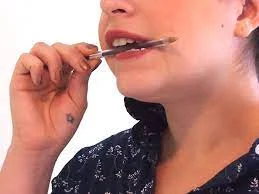
- For side-to-side jaw exercise, require a small object, like a flat rigid stick. the flat rigid stick will work to achieve the jaw’s range of motion.
- Step 1: Position a clean rigid stick, like an art stick, in the mouth, holding the stick softly between the upper teeth and lower teeth.
- Step 2: Now begin turning the jaw from side to side without loosening the grip on the stick.
- Step 3: Shift the lower jaw forward and backward, even holding the teeth gripped.
- Attempt side-to-side jaw exercise at least once time in a day and use a wider stick if this movement brings too easy for you.
Tongue Up Exercise
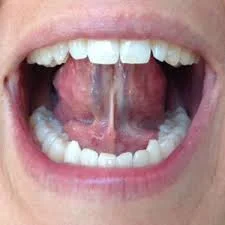
- Tongue up is a comfortable exercise that targets the jaw muscles and also assists to improve the range of motion.
- Step 1: Begin with seating or standing position, gently touching the tongue to the top of the mouth.
- Step 2: Now, without permitting the tongue to drop downwards, expand the jaw as far down as you can.
- Step 3: without pushing the tongue, close the jaw and then open the jaw again.
- Repeat the tongue-up exercise at least ten times, three times a day.
Forward jaw movement:
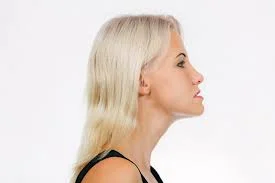
- This movement also requires a thin thing.
- Then slowly hold a thing that is about one-quarter of an inch wide between the front teeth.
- Attempt to push the jaw forward so the bottom of the teeth is in front of the top teeth.
- forward jaw movement makes it easier than returning the thing with a thicker one.
- repetitions 10 times
- sessions 3 sets per day
Exercise to clear the speech for the mouth
Tips for speaking
- Say slow and loudly.
- Begin with a topic word or/and name, so listeners understand what you want to talk about.
- ignore talking when you feel fatigued.
- Stay continually.
- Use briefer sentences.
- examine to make sure the listeners understand what you speak.
- Write or/and draw if you should have difficulty talking.
Strategies for Clear Speech
- Assume Slowly. The gradually you say, the simple it is for others to know about you. This also grants time for the tongue to speak, lips, and other fabricators to reach where essential for guaranteed speech sounds.
- Open your mouth and speak the words.
- Make sure you talk face-to-face with your listener and utilize movement and eye connection to add to the message.
- Lessen or/and stop the background noise. Turn off the TV or radio volume when you should about to talk to an individual.
- offer the listener the situation. This benefits training the listener to predict specific words.
- Do not be scared to repeat the words yourself if somebody should not understand you the first time.
- Utilizing the plans which mention above and performing that 3-4 times a day.
Lifestyle strategies to lower jaw pain for long-term
- Stress reduction: Attempt stress-relieving approaches to lessen jaw clenching. These should include yoga, journaling meditation, stroking the jaw area to relax the muscles and improve blood flow, utilizing a mouthguard to prevent the teeth from grinding together, assuming the perfect posture and not lifting a heavy bag for too long on one shoulder.
- These activities might help you to lessen jaw pain if it’s induced by stress.
- ignore hard foods: Foods that are tough or crunchy must position too much strain on the jaw joints and seem to pain and distress thereafter. Foods to ignore contain: apples, beef jerky, chewing gum, ice
- Avoid caffeine: Your sunrise cup of coffee should be contributed to muscle tension, which should be improved by caffeine. Avoiding large doses of caffeinated coffee and tea might support lower jaw pain beyond time, but you might originally feel muscle tension from leaving caffeine when missing it from the diet.
Complications of the Jaw Dislocation
- This complication occurs when the person should not seek medical awareness for jaw pain.
- The problems depend on the cause and other characteristics applying the treatment process.
- Some probable complications of jaw muscle pain involve: Emotional distress, Infections, Dental difficulties, Constant pain surgical difficulties
- The loss of hunger because of pain, and problems in chewing and swallowing.
Prevention of the Jaw Dislocation
- Jaw dislocation is familiar for people who are in a car, motorcycle, or connected accident and also sports-related activities. This injury should not identify precise ages or genders because it should occur to anybody. People who dislocate their jaw should not generally aim for emergency medical care. In most cases, jaw dislocations are acute and should be changed by little manipulations.
FAQs
How long should a person leave with dislocated jaw?
the person should not open her/his mouth broad for almost 4 weeks after dislocating the jaw. Help the jaw with a hand every time he/she sneezes or yawns during the dislocated time
should a person require surgery for a dislocated jaw?
When the jaw becomes dislocated, an oral surgeon will position the jaw back into a normal position. surgery will normally be done by hand with the help of local anesthetics and muscle relaxants to relieve pain and relax the jaw muscles sufficiently to be managed. In more extreme cases, surgery should also be a key factor.
How should a person relocate a dislocated jaw?
The most popular procedure is to position the operator’s thumbs beyond the patient’s molar teeth and move the dislocated jaw downward and backward. This trick takes much effort and generally requires sedation. Loss to reduce the pain should not abnormal
How does the person sleep with a dislocated jaw?
Laying on the side with a hand under the pillow should also aggravate the symptoms of temporomandibular dislocation. This harmful sleep situation makes a misalignment of the head and neck, causing temporomandibular joint pain very possible. The best sleep situation for temporomandibular dysfunction must rest on the back in demand to keep the head and neck correctly aligned.
What is the best jaw posture?
Proper Resting Oral Posture. When not eating or speaking, a person’s mouth posture should be like lips closed, tongue on the top of the mouth, teeth lightly connecting, or just separated. With the tongue resting on the top of the mouth and the mouth closed perfectly, proper balance appears.
How do you stop jaw dislocation pain?
Eat soft foods that are comfortable to chew to decrease jaw and mouth pain. ignore hot foods or beverages, which might improve swelling surrounding the mouth. Avoid any activity that might harm the jaw again. set the jaw/mandible with the hands when yawning or sneezing for at least 3 weeks after the injury.
How does the jaw affect posture?
in posture, a misaligned jaw will change the posture of the head. This, in turn, will place unnecessary stress on the spine. This strain on the spine affects the whole posture and seems to serious pain, extra nerve disruption, raised muscle strain, and affects the whole body.
How much range for a normal jaw opening?
Many muscles and nerves surround the jaw perform together to open and close the mouth. Most people must open their mouth about 35 to55 mm and 1.4 to 2.2 inches, this measurement for opening the mouth must be around the width of three fingers
What is the most effective treatment for the temporomandibular joint?
Bite guards are the most broadly suggested treatment for moderate temporomandibular joint symptoms. the splints should decrease temporomandibular joint pain and the risk of long-term side effects should be minimal. There are two main types of dental splint, a temporomandibular joint mouthguard, and a bruxism tooth grinding mouthguard
Can biofeedback help with temporomandibular joint pain?
With the use of biofeedback training, a patient with a long-duration history of temporomandibular syndrome should able to measure accurately and control the level of pressure in the masseter muscle.

